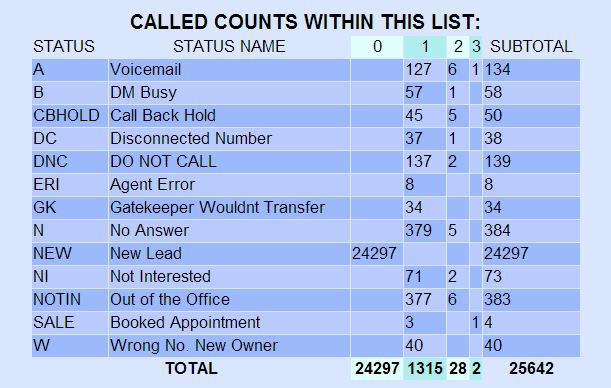Disposition codes (sometimes called “dispo codes“) are short codes or names that are used by call center agents (or call center software) to “disposition” a call. Put more simply — dispo codes are used as shorthand to keep track of what happened on a call.
Think about it — many call centers receive or make thousands of calls a day. For a sales call center, inbound calls can result in a number of different outcomes. A call may result in a sale. A call may result in an angry customer who hangs up on the agent. A call may result in the caller asking to be called back.
Call centers use “disposition codes” to keep track of these different outcomes. In the examples above, the dispo codes could be “SALE”, “CHUP” and “CALLBACK” (where “CHUP” is a shorthand dispo code referring to “caller hung up“).
By using a standard set of disposition codes, a call center can create better reports and dig into call data to track performance.
For example, a sales contact center is going to be laser focused on tracking how many sales each agent makes. One way to do that is to track how many calls are dispo'd as “SALE”.
In many situations, a call may terminate before it gets to an agent, so the agent doesn't have an opportunity to dispo the call. Modern call center software (such as CCaaS systems) can be configured to auto-dispo these calls. For example, if an outbound call is placed, but the phone number dialed is no longer in service, the call center software may generate a system disposition for the call (e.g., such as “BAD”).
This allows that phone number to be taken out of an outbound dialing list so resources are not wasted on that bad number.
Here's an example of a list of disposition cods and a sample report from a hosted contact center platform. The status codes are the disposition codes that have been established by the call center. The status name is a plain english label for each dispo code.


